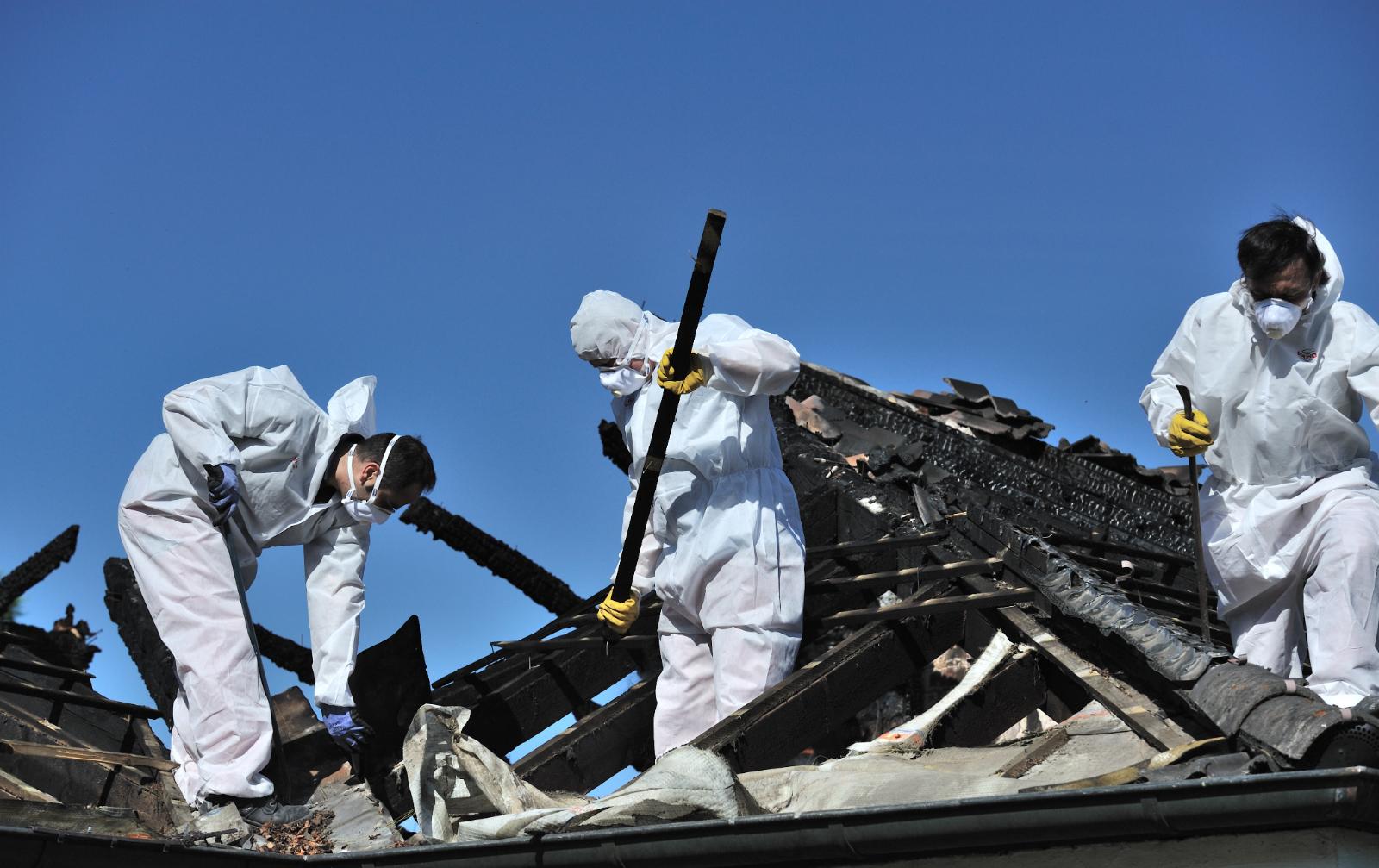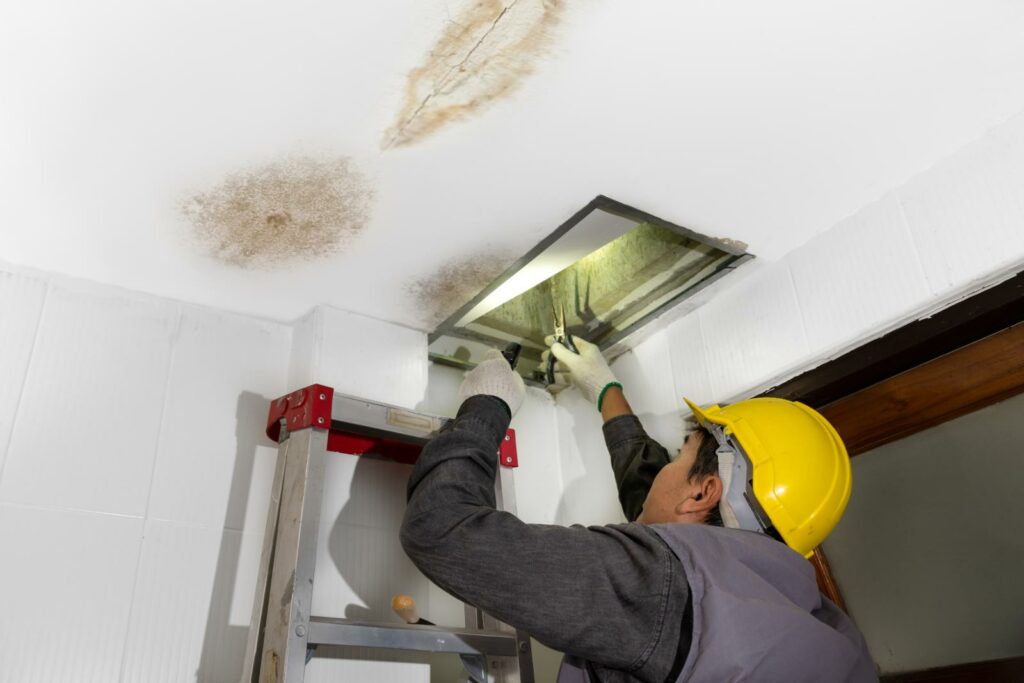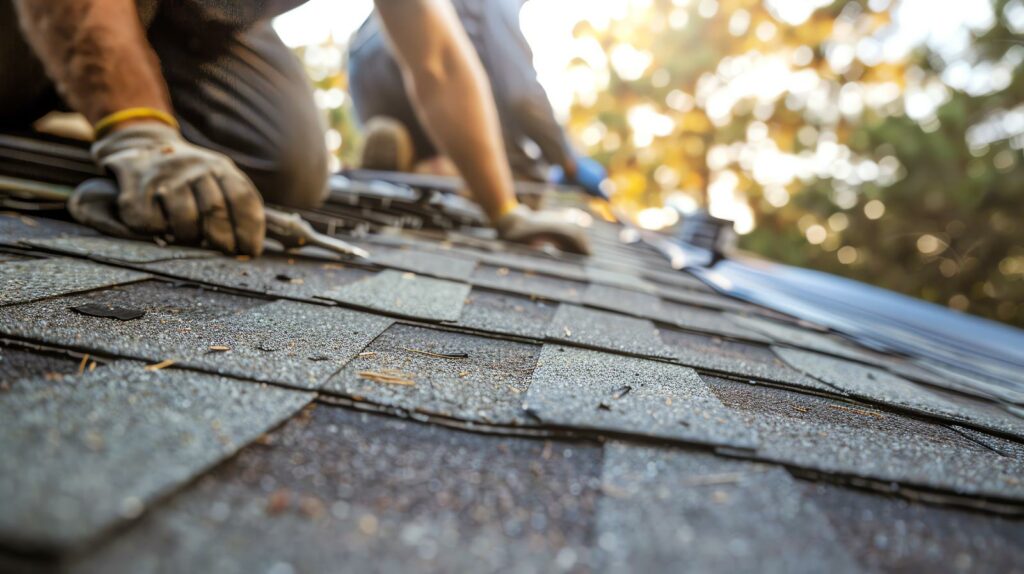Contents
When a fire strikes, it’s like a relentless force leaving chaos in its wake. But fear not, for a rapid emergency fire damage restoration team is your beacon of hope. Imagine having a meticulously crafted checklist that guides you through the tumultuous aftermath, ensuring every essential step is taken with precision and care. From the initial assessment to the final client communication, each task plays an important role in the restoration process. So, are you ready to discover the key elements of this essential checklist that can make all the difference in restoring order from the ashes?
Key Takeaways
- Establish clear chain of command for efficient communication and decision-making.
- Prioritize safety of team and occupants by following emergency response procedures.
- Secure property by boarding up, marking hazards, and assessing structural integrity.
- Document and inventory contents for protection and restoration planning.
- Utilize specialized equipment for water extraction, drying, fire damage evaluation, smoke and odor removal, mold inspection, and structural repairs.
Initial Assessment and Safety Measures
Before beginning any fire damage restoration work, conduct a thorough initial assessment to confirm safety protocols are in place. Start by identifying potential hazards such as structural damage, electrical issues, or weakened areas that could pose risks during restoration. Utilize emergency response procedures to address immediate safety concerns, such as securing the property and ensuring all individuals involved are out of harm’s way.
During the initial damage assessment, prioritize the safety of both the restoration team and any occupants of the property. Clearly communicate evacuation routes and assembly points in case of emergencies. Establish a clear chain of command to ensure that safety measures are implemented effectively and efficiently.
Secure the Property and Contents
To guarantee the safety of your property following a fire, it’s vital to implement specific safety measures and strategies to protect your belongings. By securing the property and contents promptly, you can prevent further damage and loss.
Take immediate action to safeguard your home and possessions from additional harm.
Property Safety Measures
When securing the property and its contents after a fire, prioritize immediate safety measures to prevent further damage or harm. Start by ensuring all individuals are safe and accounted for before entering the property.
Implement preventive measures like turning off utilities to prevent additional hazards. Secure the premises by boarding up broken windows and doors to deter intruders and protect against the elements. Use caution tape or barriers to mark off hazardous areas. Keep a record of items removed for safekeeping.
Perform a thorough assessment of the property’s structural integrity before allowing reentry. By following these emergency response protocols and preventive measures, you can help safeguard both the property and its contents effectively.
Content Protection Strategies
Are your valuable belongings and property adequately protected in the event of a fire emergency? Content preservation and restoration techniques are essential to safeguard your possessions. Follow these steps to guarantee the protection of your belongings:
-
Document and Inventory: Create a detailed list of all your possessions and their condition before a fire occurs.
-
Secure Important Documents: Store essential documents like passports, deeds, and insurance policies in a fireproof safe or off-site location.
-
Utilize Protective Coverings: Use plastic covers or wrap to shield furniture and other items from smoke and soot damage.
-
Engage Professional Restoration Services: Seek expert assistance to clean, repair, and restore your belongings post-fire to maximize salvageability.
Water Extraction and Drying
For effective water extraction and drying after a fire, prioritize locating and addressing all areas where moisture has infiltrated to prevent further damage. Begin by initiating the dehumidification process to remove excess moisture from the air and surfaces. Utilize specialized equipment such as dehumidifiers and air movers to expedite drying and prevent mold growth. Guarantee thorough moisture control by regularly monitoring moisture levels in affected areas.
Inspect the HVAC system to prevent the circulation of contaminated air and maintain good indoor air quality. Properly clean and sanitize air ducts and vents to eliminate smoke particles and other pollutants. By enhancing the air quality, you create a healthier environment for both occupants and workers.
Fire Damage Evaluation and Cleanup
To effectively address fire damage, start the evaluation and cleanup process by carefully analyzing the extent of the destruction and developing a thorough restoration plan. Here’s a concise guide to assist you in managing this vital phase:
-
Emergency Response: Guarantee safety by evaluating structural integrity and securing the property before proceeding with cleanup.
-
Insurance Coverage: Reach out to your insurance provider promptly to kickstart the claims process and understand coverage for fire damage restoration.
-
Soot Removal Techniques: Utilize specialized equipment and techniques to effectively eliminate soot from various surfaces, preventing further damage.
-
Restoration Timeline: Establish a clear timeline outlining each step of the restoration process to efficiently restore the property to its pre-fire condition.
Smoke and Odor Removal
When tackling smoke and odor removal after a fire, employing effective odor elimination techniques is vital in restoring your property.
Additionally, thorough smoke residue cleaning is essential to rid your home of any lingering smells.
Odor Elimination Techniques
Implementing effective odor elimination techniques is essential in restoring a space after fire damage, particularly in addressing smoke and lingering odors. Here are four techniques to help you effectively eliminate odors:
-
Odor Neutralization Techniques: Utilize specialized odor neutralizers that break down odor-causing molecules.
-
Air Purification Methods: Use high-efficiency particulate air (HEPA) filters to remove smoke particles and purify the air.
-
Vapor Modification: Employ vapor modification technology to neutralize odors embedded in walls, floors, and furniture.
-
Ozone Treatment: Consider ozone generators to oxidize and eliminate odors at their source.
Smoke Residue Cleaning
Effective smoke residue cleaning is essential for thorough smoke and odor removal in fire-damaged spaces. To achieve professional restoration, specialized cleaning techniques and equipment are vital.
Start by ventilating the area to reduce smoke smell. Then, utilize specialized cleaning agents designed to break down smoke residue on surfaces. Techniques like dry cleaning sponges can remove residue without smearing. For tougher stains, consider using high-efficiency particulate air (HEPA) vacuums to capture fine particles.
Additionally, thermal fogging can neutralize odors by creating a mist that penetrates areas affected by smoke. Remember to wear appropriate personal protective equipment and consult with experts in fire damage restoration for the best results.
Mold Inspection and Remediation
To effectively address mold issues after a fire, it’s important to conduct a thorough inspection and promptly initiate remediation procedures. Mold can quickly develop in damp and dark areas following a fire, posing health risks and further damage to the property. Here are essential steps to successfully inspect and remediate mold:
-
Assessment: Begin with a detailed inspection of the property to identify areas affected by mold growth.
-
Containment: Isolate the contaminated areas to prevent the spread of mold spores to unaffected parts of the building.
-
Remediation: Utilize appropriate remediation techniques such as HEPA vacuuming, dry brushing, and antimicrobial treatments to eliminate mold growth.
-
Prevention: Implement measures like improving ventilation, reducing humidity levels, and fixing leaks to prevent future mold issues.
Structural Repairs and Restoration
Inspecting the structural integrity of the property is vital following fire damage, as it sets the foundation for successful repairs and restoration efforts. Structural reinforcement and restoration techniques play an essential role in ensuring the safety and stability of the building post-fire. Here’s a detailed look at what needs to be considered:
| Structural Reinforcement | Restoration Techniques |
|---|---|
| – Evaluating the extent of damage to load-bearing walls and beams. | – Cleaning and removing soot and smoke damage. |
| – Strengthening weakened structures to prevent collapses. | – Repairing or replacing damaged insulation and drywall. |
| – Conducting thorough inspections of the foundation for any heat-induced cracks. | – Utilizing specialized equipment for odor removal. |
Documenting Damages for Insurance
Documenting damages for insurance purposes necessitates meticulous cataloging of all fire-related destruction to ensure accurate claims processing and settlement. To guarantee a smooth insurance claim process, follow these steps:
-
Evidence Collection: Gather all relevant documentation, including photos, videos, and written descriptions of the damages. Make sure to date and label each piece of evidence for clarity.
-
Damage Documentation: Create a detailed inventory of all items affected by the fire, noting their condition and approximate value. This documentation is essential for accurately evaluating the extent of the loss.
-
Insurance Coverage: Review your insurance policy to understand the coverage limits and requirements for filing a claim. Be prepared to provide all necessary information to expedite the process.
-
Claim Submission: Organize all evidence and documentation neatly and submit your claim promptly. Follow up with your insurance company to ensure that your claim is being processed efficiently and inquire about any additional information needed.
Final Inspection and Client Communication
Proceed with a thorough examination of the restoration work and engage in clear and proactive communication with the client to ensure satisfaction and address any lingering concerns effectively.
The final walkthrough is vital in ensuring client satisfaction and solidifying trust in your services. Begin by meticulously inspecting all areas that underwent restoration, checking for quality, completeness, and adherence to the client’s expectations.
Communicate openly with the client during this walkthrough, explaining the work that has been done, highlighting any specific details, and addressing any questions or uncertainties they may have. Encourage the client to provide feedback and voice any concerns they might still harbor.
By actively listening and responding to their feedback, you demonstrate a commitment to their satisfaction. Additionally, this interaction offers you the opportunity to make any necessary adjustments promptly, ensuring that the client is fully content with the restoration outcome.
Conclusion
To guarantee a successful fire damage restoration process, follow the thorough checklist diligently. By prioritizing safety, conducting detailed assessments, and addressing each step with precision, you can swiftly restore the property to its pre-damaged condition.
Remember, attention to detail and clear communication with clients are key to achieving the best results. Trust in the process and expertise of your restoration team to bring your property back to life after a fire emergency.




